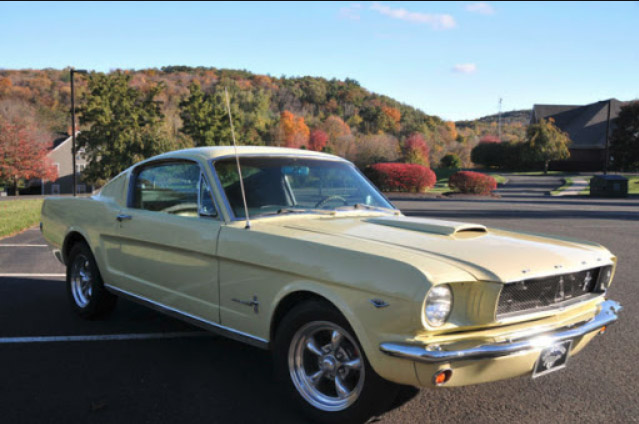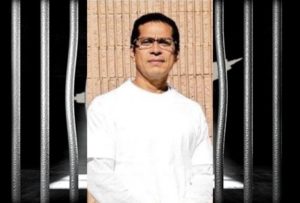I got to experience 7 months of what Federal inmates call “diesel therapy”. When you are sentenced to prison by the federal government, sometimes you are taken on a long tour of the United States before you get to the prison where you will serve your sentence. Essentially, you are loaned out to various county jails around the U.S. on your way to your final destination. These county jails then get to bill the federal government a lot of money for each day that they house you. It’s one of the many ways for the Prison Industrial Complex to make more money off of taxpayers.
For several reasons, county jails are the worst places to do any time. They are usually intentionally underfunded so maintenance, inmate food, and sanitation are not priorities. One place I stayed at was in a dusty little Oklahoma town. Word was that this little town voted to build a modern new jail that they couldn’t afford and were desperate for customers. The place was only half finished when they ran out of money. Fifty of us were herded into a room about the size of a squash court. We slept on folding canvas camping cots crammed together within inches of each other. The two sinks were not functioning and only one toilet barely worked. Mops and disinfectant were not provided. We lived like this for a week before we were moved to the completed wing of the jail where there was hot water, soap, and mattresses. The food was terrible and barely edible, of course. There was a commissary to buy tastier junk foods but it takes a week before friends can get money to you so I had to eat some of the jail slop until the funds showed up. After a two week stay, the bus finally came to move us to our next tour stop.
This routine of moving from jail to jail starts to drag on you after two or three months. You are always in cuffs and leg irons while in transit for 12 to 24 hours at a time. The bus is packed much tighter than commercial transportation. Seats are typically six inch wide steel benches and the backs are bolt upright. Knee room is about 10 inches. Even the seats on the federal prison jet aircraft, AKA ConAir, are like this too. There is white bread and water available while you travel but using a bathroom is problematic. You are chained to the floor, packed in tightly; the bathrooms are shockingly filthy and the guards are not there to guide you to the bathroom whenever you want. I found it better to just not eat or drink anything during your transit for obvious reasons. Departure dates and times are a secret for security reasons so you can’t start fasting the night before departure or I would have done that too.
For months, you are never sure when you are being moved, where you are being moved, or how you are being moved. You don’t even know your final destination. Some stays were two weeks. Some were two months. The other stops were somewhere in between. You are never told where you are or where you are going. Sometimes you travel by van, sometimes by buses, sometimes by jet aircraft. You find out when it happens.
On what turned out to be the final leg of diesel therapy, we were being transported from the big federal facility in Phoenix to Sanford, Arizona by bus. There all kinds of prisoners on that bus. There were low level offenders like me and hardened criminal types. The bus stopped at a maximum security prison in Tucson to drop off a couple of dozen prisoners. This prison was surrounded by three chain link fences that were 30 feet tall and topped with razor wire. Gun towers overlooked every corner of the perimeter. Nothing but parched desert sand as far as the eye could see. The prison itself looked like a giant solid block of concrete with no windows and only one door that I could see. Only one way in and one way out. One of the guys who got off the bus there was an Aryan Brotherhood recruiter and he sat across the aisle. He was propagandizing the guy sitting next to me to be part of the gang during the long bus ride.
In the past seven months of diesel therapy, I had been around many different gangster types but this AB guy was classic. He was a big dude. About 6 feet 4 inches tall, solidly built with huge hands. His prison clothes were tailored to fit him and freshly laundered. And ironed. He was clean shaven and his hair was recently cut. It was clear that this guy had some serious juice and connections throughout the federal prison system. The prisoner who was approached by the AB recruiter was a tall lanky bank robber named Ronnie.
Ronnie was just a good ole boy from Missouri. He unfortunately had developed a serious drug habit and made a series of bad choices in order to fund his habit. He had gotten a pretty stiff sentence as a repeat offender but he had been in prison long enough with good behavior to earn a prison location better than where that AB guy ended up. He still had 10 years to go but Ronnie was happy to be transferred to a lower security prison where doing time is easier. Ole Ronnie knew a lot about how the prison system worked. I already had done a relatively short stretch in a federal prison camp in Oregon but I was now stepping up to a higher security classification. The differences were signicant and Ronnie would point them out to me. Where I saw a harsher environment, Ronnie saw nicer amenities compared to his previous stays in various high and medium security prisons.
The federal Bureau of Prisons has three basic levels of prison security. The lowest level prisons are called Camps and don’t have any walls or fences. You could sneak away if you really wanted to leave. Everyone there has only a relatively short sentence so there is little incentive to escape although it did happen once when I was in one of them. The next higher levels start to involve fencing, walls, barbed wire, armed guards, and gang politics. As you can imagine, life gets tenser with each escalation of the security level. Prisoners who are serving life sentences are placed in maximum security prisons where life can get pretty harsh. Even medium security prisons can be nasty places. There was a medium security prison next door to the Camp where I did some time. An ambulance would show up two or three times a month to cart away someone injured in a fight. I don’t think that books and movies can convey the intense mindset needed to cope with life in a maximum security prison.




